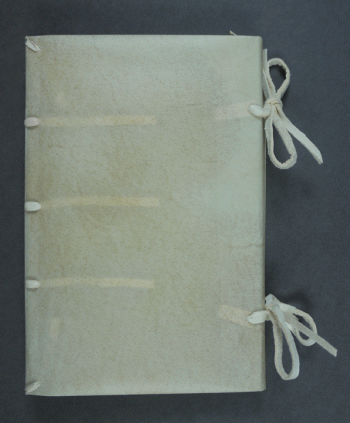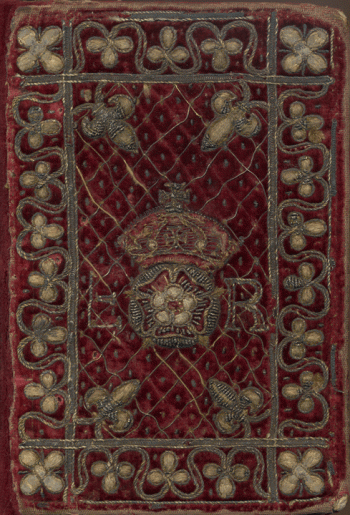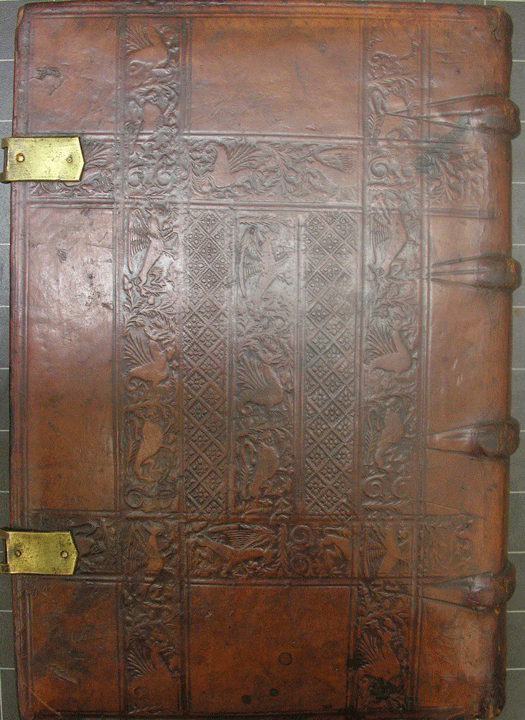Judging a book by its cover?
Unlike modern books, whose colourful dust jackets or brightly illustrated paperback covers give immediate clues to their content, early printed books were usually bought direct from the publisher as a text block, unbound. The purchaser could take the text to his favoured bookbinder to be bound as he chose. Copies of the same text could be found in a wide variety of covers: plain vellum wrappers, which were perhaps the cheapest durable covering, leather bindings, possibly stamped with the owner's initials or coat of arms, perhaps gold-tooled, even embroidered velvet for a royal library.
Examples of the many different binding styles, with illustrations, can be found on the Library's website at http://www.joh.cam.ac.uk/library/special_collections/provenance/binding…
Sometimes a binding tells more about the history of a volume than just its ownership. Individual binders may be identified by the techniques which they employed, providing evidence of where and when a volume was bound. The Library contains several examples of the work of Garrett Godfrey, a Cambridge binder of the sixteenth century. Godfrey was probably born at Graten in Limburg. He is first mentioned as a stationer in Cambridge in an indenture of 1502 between the University and the town, listing townsmen who were to enjoy the University's privilege. He lived and worked in the parish of Great St Mary, serving at times as the parish's churchwarden. In 1534 he, his cousin Segar Nicholson, and Nicholas Spierinck were appointed the three University stationers. He is best known as a bookbinder. On his death in 1539, he left his bookbinding equipment and his fox-furred gown to his servant Nicholas Pilgrim, whom he intended to succeed him in his business.
Garrett Godfrey's bindings were of blind-stamped calfskin, with designs being impressed upon the leather using a decorative roll. Five different rolls have been identified as being used by Garrett Godfrey. The first, and most frequently used, features three animals: a gryphon, a wivern and a lion, separated by foliage, and with the binder's initials under the lion. The second has five sections, containing a turreted gateway with portcullis, a fleur-de-lys, a pomegranate, a rose (each with a royal crown), plus a final section featuring a shield with three horseshoes between the binder's initials. The third roll is similar, though narrower, with the same four elements, but placing the initials in a small panel between the rose and the turreted gateway. The fourth roll has quatrefoils within lozenges, while the fifth has wheels and knots of interlaced strapwork.
This work by John Fisher, Assertionis Lutheranae confutatio, published in 1523 and given to the College in the 1630s, shows examples of rolls one and four. Roll one forms a border, which encloses a panel of three rows: two of roll four enclosing a centre of roll one.
This Special Collections Spotlight article was contributed on 17 April 2014 by Kathryn McKee, Special Collections Librarian.


